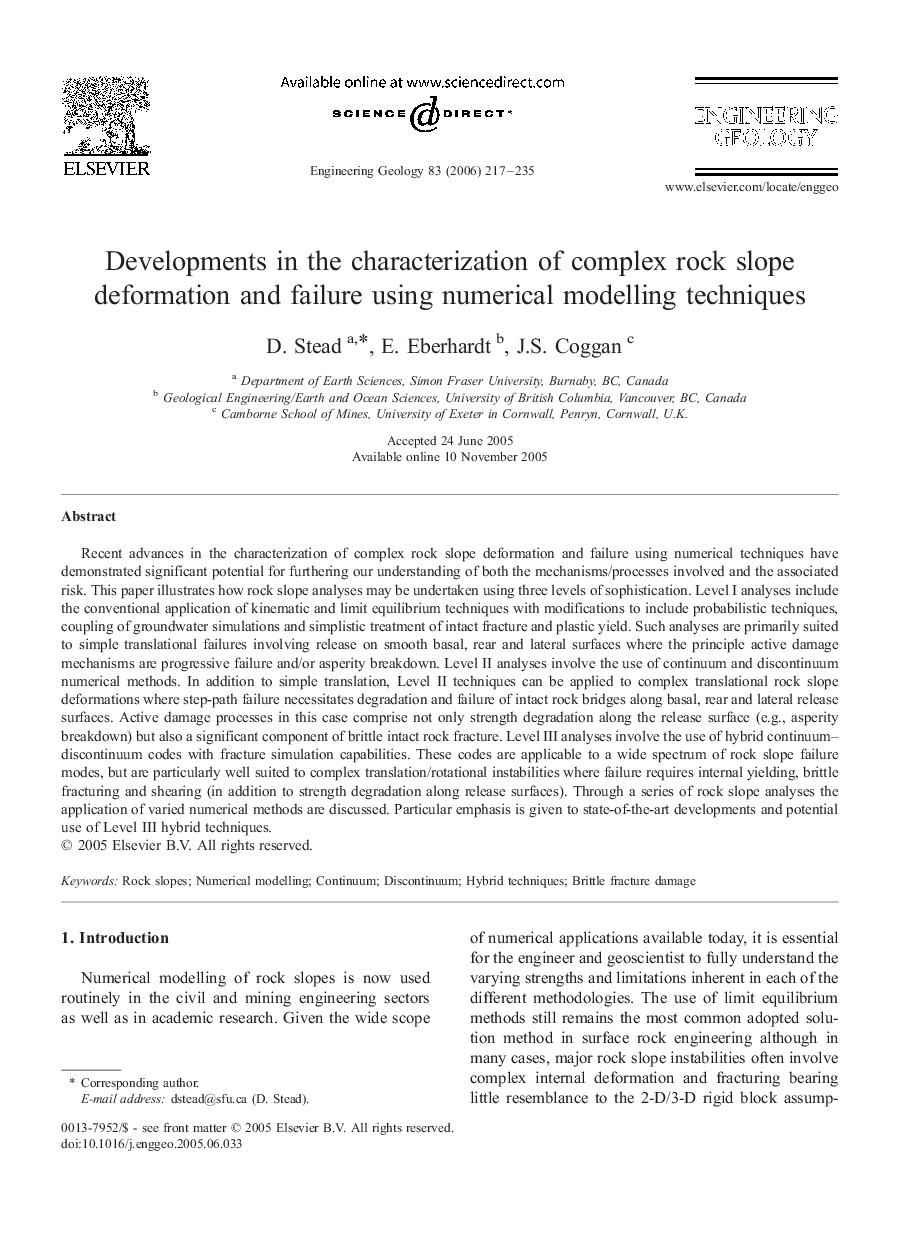| Article ID | Journal | Published Year | Pages | File Type |
|---|---|---|---|---|
| 4745194 | Engineering Geology | 2006 | 19 Pages |
Recent advances in the characterization of complex rock slope deformation and failure using numerical techniques have demonstrated significant potential for furthering our understanding of both the mechanisms/processes involved and the associated risk. This paper illustrates how rock slope analyses may be undertaken using three levels of sophistication. Level I analyses include the conventional application of kinematic and limit equilibrium techniques with modifications to include probabilistic techniques, coupling of groundwater simulations and simplistic treatment of intact fracture and plastic yield. Such analyses are primarily suited to simple translational failures involving release on smooth basal, rear and lateral surfaces where the principle active damage mechanisms are progressive failure and/or asperity breakdown. Level II analyses involve the use of continuum and discontinuum numerical methods. In addition to simple translation, Level II techniques can be applied to complex translational rock slope deformations where step-path failure necessitates degradation and failure of intact rock bridges along basal, rear and lateral release surfaces. Active damage processes in this case comprise not only strength degradation along the release surface (e.g., asperity breakdown) but also a significant component of brittle intact rock fracture. Level III analyses involve the use of hybrid continuum–discontinuum codes with fracture simulation capabilities. These codes are applicable to a wide spectrum of rock slope failure modes, but are particularly well suited to complex translation/rotational instabilities where failure requires internal yielding, brittle fracturing and shearing (in addition to strength degradation along release surfaces). Through a series of rock slope analyses the application of varied numerical methods are discussed. Particular emphasis is given to state-of-the-art developments and potential use of Level III hybrid techniques.
